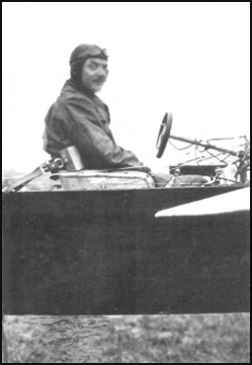
1884-1918 AKA Benny Hucks |
 |
BLACKBURN MERCURY Photo courtesy of Mrs. Judy O'Donovan Plane Identification courtesy of Nick Forder |
|
via email from Nick Forder, 4-14-04 |
|
via email from Nick Forder, 4-14-04 Barlow (I can never remember whether his christian name was Howard or Harold) has been described as a 'colonial sportsman'. I think he was a Kiwi or an Aussie (hence the desire to take aircraft to Australasia). Barlow accompanied Hucks on the flight from France with the Bleriot XI-2 'The Firefly' in 1912. This was well reported in 'Flight' (I have a copy). Firefly was the main aircraft Hucks used in 1912/13; by about September 1913 it had been replaced by a second 2-seater called 'The Tornado'. Barlow died in January 1913, and Hucks set up his own company to operate "Firefly" and a 50 hp Bleriot he had flown while with G-W. "Firefly" was replaced with the 80 hp Bleriot XI-2 "The Tornado" in late 1913, and a special 'looping Bleriot' XI was purchased towards the end of the year (Hucks having become the first English pilot to loop in November 1913 - albeit at Buc). Tornado, the 50 hp Bleriot and the Looper were all impressed by the RFC and Hucks became a 2Lt in the RFC Special Reserve. While serving he sought a supposed Zeppelin base in the Lake District and acted as a ferry pilot before being posted to 4 Squadron with the BEF. Invalided out of the BEF with pleurisy in early 1915, Hucks tested and delivered aircraft for G-W (Moranes) and Ruston & Proctor (BE2), before joining the Aircraft Manufacturing Company as a test pilot. He undertook virtually all the test-flying for the DH5 and was seconded to Westlands to help with the DH9a development programme. J. C. Savage was an employee of Barlow and one of Hucks' managers. You can find a link to his story of Huck entitled Pioneers of Flight right below: |
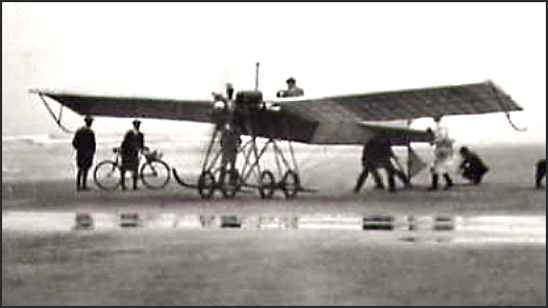 |
|
Scarborough Historical Society via email from Mark Dodsworth, 2-20-05 To read the rest of the story, and to enjoy the full size photograph of his plane, click on the title above. |
|
|
|
B. C. Hucks, the first English airman to fly upside-down An Eventful Career by J.C. Savage Editor's Note: I heartily recommend that you visit this site to read the rest of the story and to enjoy the several images of the Brochure from which the materials have been taken. You will notice that a facsimile of this brochure, and several others, are available from the publisher, John Ridyard. To access his site, just click on the title. If you follow some of the other links, you will probably find images of postcards which show him in and about his plane. The postcards are for sale and may be gone. 1-24-03 |
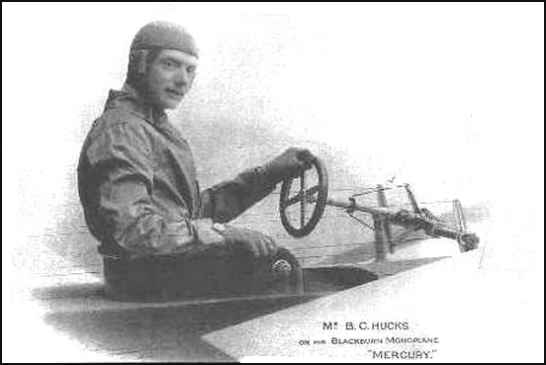 |
ON OUR BLACKBURN MERCURY Courtesy of John Ridyard/Artist/Illustrator/Publisher |
|
The Daily Mail £10,000 Prize 22 July - 7 August 1911 |
|
H. J. D. Astley (2) E. Audemars (13) G. Blanchet (11) André Beaumont (1) Gustav Hamel (24) C. Howard Pixton (19) S.F. Cody (20) James Valentine (14) Jules Védrines (9) |
C. Compton-Paterson (7) Olivier de Montalent (23) C.P. Pizey (17) C.T.Weymann (28) Lt. Reynolds, R.E. (25) Lt. H.Bier + passenger (30) B. C. Hucks (27) Lt. R.A. Cammell, R.E. (12) |
| If time permits, I am sure you will want to read the whole interesting story of this historic event. You can access the site by clicking on the title above. |
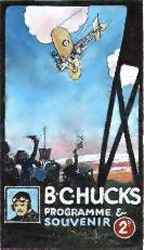 |
 |
Programme & Souvenir |
LOOPING THE LOOP! |
|
John Ridyard/Artist/Illustrator/Publisher |
|
Unlocking the Past If time permits, I think you will enjoy going to the homepage and sampling some of the many other offerings. |
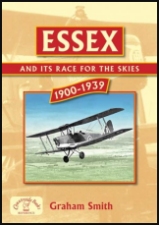 |
Essex and its Race for the Skies by Graham Smith Product Details A5 (soft cover): 224 pages Cover price: £10.99 Publisher: Countryside Books ISBN: 978 1 84674 054 1 |
|
Description from the
Countryside Books website: As recommended by Doug Killick, 10-13-07 "Essex was at the forefront of the pioneering days of flying. As early as May 1785 the first hot-air balloon had landed in the county and by the 1850s they had become a familiar sight. At the outbreak of the First World War in August 1914 six landing grounds were established with a seaplane station at Clacton. A year later Sutton's Farm (later to be re named Hornchurch) and Goldhanger were added to the list and two more were opened in 1916 at North Weald Bassett and Stow Maries. The target was initially Zeppelins and later German Gotha bombers. In peacetime, the county soon played host to flying circuses and air displays. Joy-riding became a favourite pastime. One local entrepreneur, Edward Hillman, was not slow to see the opportunities in air travel and basing himself at Maylands first opened up a route to the seaside resorts of Kent next to Liverpool, Glasgow and Belfast and then to France and Belgium. But another war loomed and by the mid 1930s seven new fighter stations were established; one of them RAF Debden. At the outbreak of the Second World War the nine fighter squadrons then based in the county were ready and eager to meet the Luftwaffe and open another heroic chapter in the aviation history of Essex. Illustrated." which can be accessed by clicking on the name. |
|
Courtesy of Giovanni Giorgetti, 9-6-06 Italian HUCKS CARLO – Nato a Londra il 25 ottobre 1884. Lavorò come meccanico con Graham White e lo accompagnò con Carr e Turner in un giro attraverso gli Stati Uniti nel 1910. Al ritorno si occupò nelle officine Blackburn e conseguito il brevetto di pilota aviatore (n. 91) il 3 maggio 1911 a Filey, fece un giro nell’ovest dell’Inghilterra e nel Galles del sud; attraversò più volte il canale di Bristol e prese parte anche all’ultimo circuito britannico. Partecipò nell’estate del 1912 al Cross Country. Ottenne ottimo successo il suo volo Weymouth- Hendon (148 miglia in 140 minuti) e l’altro viaggio a Barth e ritorno: Fu il primo pilota inglese che imitò Pegoud. English Hucks CARLO - He was born in London on October 25, 1884. He worked as a mechanic with Graham White and took him with Carr and Turner on a tour across the United States in 1910. In return, he got a job in Blackburn workshops and, received his pilot's license (No. 91) on 1911, 3 May in Filey, he made a tour in western England and south Wales, and he repeatedly crossed the Bristol Channel and took part at the last British circuit. He participated in the summer of 1912 to Cross Country. His flight Weymouth-Hendon (148 miles in 140 minutes) achieved great success and so another trip to the Barth and return. He was the first British driver who imitated Pegoud. |


|